SEC suspends trading of securities hyped in social media
The Securities and Exchange Commission (SEC) this week suspended trading in the securities of 15 companies because of questionable trading and social media activity.
The action follows the recent suspensions of the securities of numerous other issuers, many of which may also have been “targets of apparent social media attempts to artificially inflate their stock price,” the SEC said in a release. The order also states that none of the issuers has filed any information with the SEC or OTC Markets, where the companies’ securities are quoted, for over a year.
The SEC also recently issued orders temporarily suspending trading in: Bangi Inc. (BNGI); Sylios Corp. (UNGS); Marathon Group Corp. (PDPR); Affinity Beverage Group Inc. (ABVG); All Grade Mining Inc. (HYII); and SpectraScience Inc. (SCIE).
Each of these orders stated that the suspensions were due at least in part to questions about whether social media accounts have been attempting to artificially increase the companies’ share price. The SEC can suspend trading in a stock for 10 days and generally prohibit a broker-dealer from soliciting investors to buy or sell the stock again until certain reporting requirements are met.
Mutual of Omaha aims to get ‘Retirement Right’
The Retirement Services division of Mutual of Omaha Insurance Company has enhanced its employer-sponsored retirement product and rebranded it as “Retirement Right.” The upgrade adds more pricing options for small to large plans and provides investment options, service flexibility and participant tools at any level, a company release said.
The launch will include national advertising, social media, digital and print media, with tactics kicking off in this month. “We’re here to help our plan sponsors and their employees get retirement right.” said Michelle Gibilisco, director of Business Development at the insurer.
“We are engaged in many new plan opportunities and our increased pricing flexibility allows us to be more competitive on plans of all sizes,” said Bob Woods, 401(k) National Sales Director at Mutual of Omaha, in the release.
Mutual of Omaha has been a retirement plan provider for 45 years, offering flexible product design, investment co-fiduciary services, 3(16) administrative fiduciary services, and participant engagement tools, the release said.
Americans feel more financial damage from pandemic than in 2008: Allianz Life
Nearly seven in 10 (69%) Americans (age 21+ in 2007) said they believe the COVID-19 pandemic will have a greater overall economic impact than the Great Recession (2007-2009), according to the new 2021 Retirement Risk Readiness Study from Allianz Life Insurance Co. of North America.
More than half (56%) of respondents said the pandemic will also have a greater impact than the Great Recession on their personal finances. The results were based on a
December 2020 online survey of 1,000 people ages 25 and older in the lower 48 states. Singles with household incomes over $50,000, couples with incomes over $75,000, and those with investable assets of at least $150,000 were included. In other results:
68% of respondents (68%) said they retired earlier than expected, up from the 50% who acknowledged earlier-than-expected retirement in last year’s study. Similar to 2020, the majority said they retired involuntarily, for healthcare issues (33%, up from 25% in 2020) and unexpected job loss (22%, down from 34% in 2020); 43% said they couldn’t save for retirement right now (up from 37% in 2020), and 42% felt too far behind on their retirement goals to catch up (up from 31% in 2020).
Americans still have unrealistic expectations about working in retirement. A full 70% of non-retirees think it is likely they will work at least part time in retirement, up from 65% in 2020. Yet, only 6% (versus 7% in 2020) of retired respondents were doing so.
The closer people are to retirement, the less they want to keep working. When asked if they would rather retire at age 55 with their basic expenses covered or work until age 75 and spend more in retirement, only 23% of retirees preferred to work longer (versus 32% of near-retirees and 48% of pre-retirees).
Near-retirees are more active in saving enough in a retirement account (29% versus 23% in 2020); diversifying their savings (42% versus 27% in 2020); researching expenses and risks associated with retirement (43% versus 35% in 2020); making a formal plan with a financial professional (37% versus 29% in 2020); and purchasing a product that provides guaranteed retirement income (38% versus 30% in 2020).
MetLife unit reinsures $5 billion in UK pension liabilities
Metropolitan Tower Life Insurance Co., a unit of MetLife, has closed its second and third longevity reinsurance transactions with Rothesay Life Plc, reinsuring approximately $5 billion of pension liabilities associated with two UK bulk annuity transactions completed in the fourth quarter of 2020.
Jay Wang, senior vice president and head of Risk Solutions for MetLife’s Retirement & Income Solutions business, said his company would continue to “expand our footprint within the U.K. longevity reinsurance market. Despite the pandemic, the UK pension and longevity risk transfer market remains resilient and robust.”
David Cox, co-head of Pricing and Reinsurance at Rothesay, said in a release, “We are pleased to continue to grow our relationship with MetLife.”
Midland National FIA, offered at RetireOne, will include BlackRock ESG index
Midland National Life has added the BlackRock ESG US 5% Index ER (ticker: BESGUVCX) as a third index available to investors in its IndexMax fixed index annuity product, which is available to fee-based advisers on the RetireOne platform. The ESG index may include companies focused, for example, on lowering carbon emissions, emphasizing workforce diversity, and strengthening data privacy and security.
Demand for socially responsible financial products increased rose 42% in the past two years, said David Stone, founder and CEO of RetireOne, citing the United States Forum for Sustainable and Responsible Investment. ESG strategies currently comprise roughly 33% of US assets under professional management. The Deloitte Center for Financial Services (DCFS) estimates that ESG-mandates assets will account for half of all professionally managed investments in the US by 2025.
The IndexMax ADV “layers in potential annual performance credits with additional 5- or 7-year term participation credits to provide rates guaranteed for the term,” according to a Midland National release. In addition to the ESG index, IndexMax ADV offers the Fidelity Multifactor Yield Index 5% ER (ticker: FIDMFYDN), and the S&P 500 Low Volatility Daily Risk Control 5% Index ER (ticker: SPLV5UE).
RetireOne, a service of Aria Retirement Solutions since 2011, serves over 900 RIAs and fee-based advisors with offerings from multiple “A” rated companies. RIAs may access this fiduciary marketplace at no additional cost to them or their clients.
(c) 2021 RIJ Publishing LLC. All rights reserved.

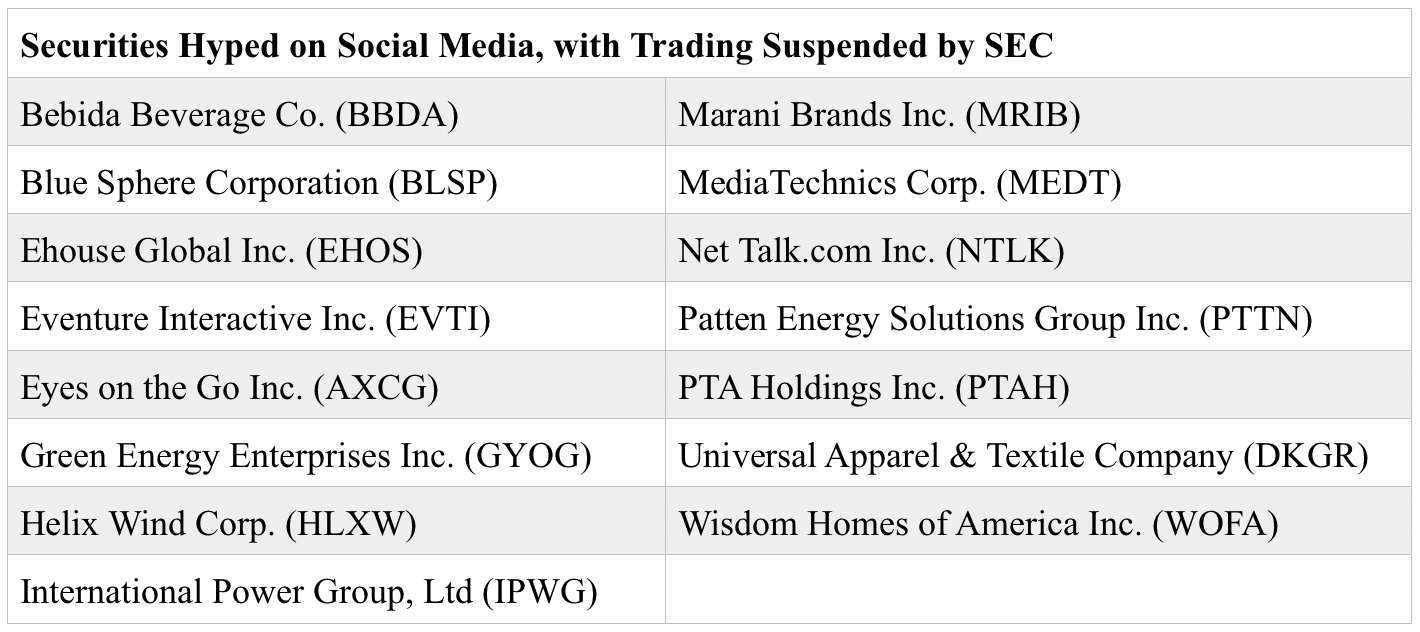


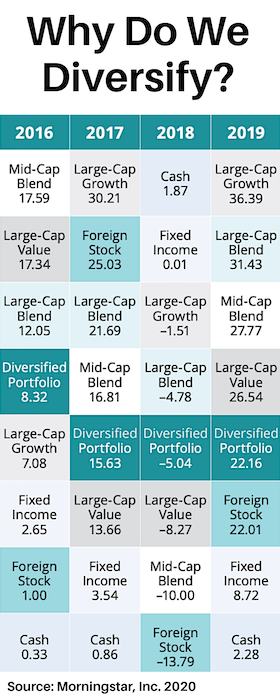

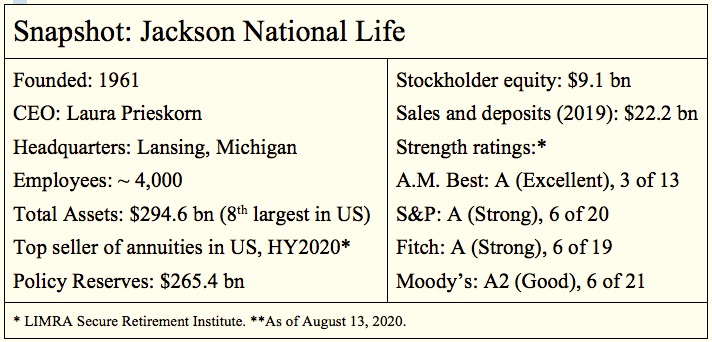
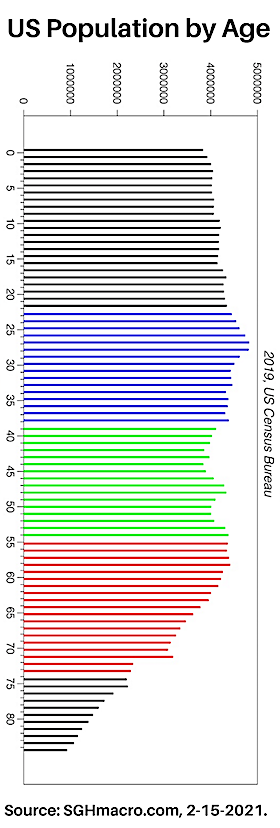




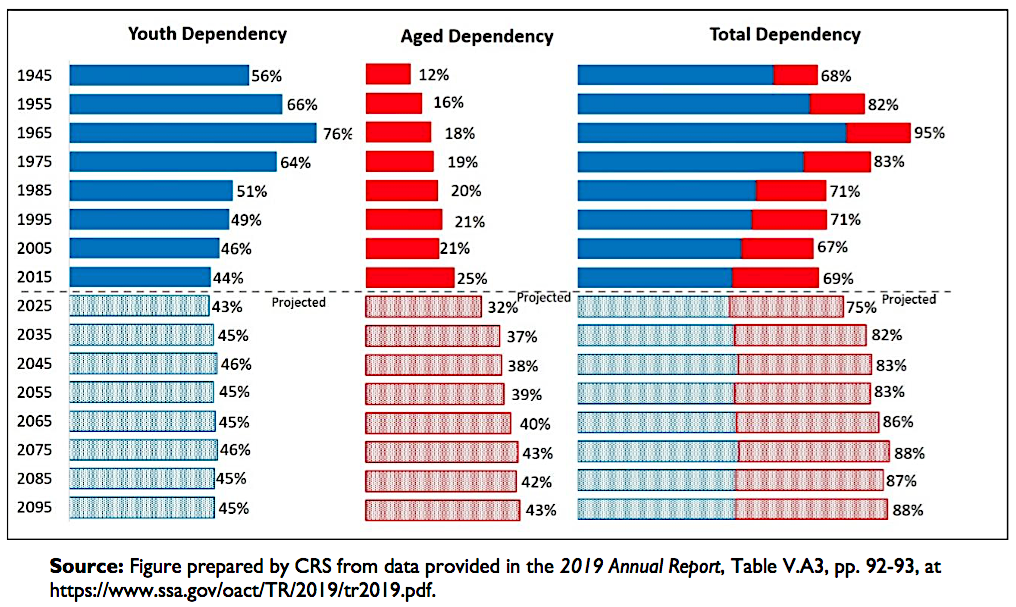


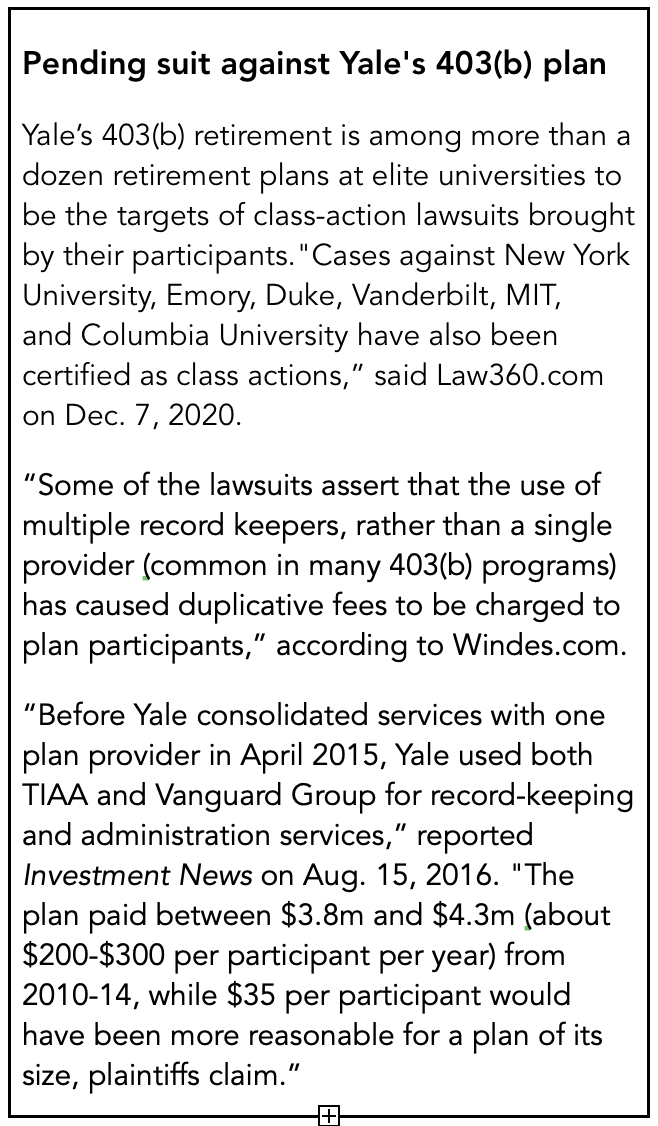 As examples of glidepaths, consider two of Yale’s portfolios. The 2060 portfolio fund allocates 11% to the TIAA Traditional guaranteed annuity and the rest to four Vanguard funds: 45% to the Total Stock Market Index, 29% to a Developed Market index fund, 9% to an emerging markets index fund, and 9% to a real estate investment trust (REIT) fund. The portfolio’s expense ratio is just six basis points a year. The 2020 portfolio, for those who recently retired or are planning to retire soon, is much more conservative. It allocates 65% of contributions to the annuity, 14% to the Total Stock Market Index fund, 10% to the Developed Market index fund, 8% to a REIT fund 3% to Emerging Markets. Its expense ratio is only four basis points a year.
As examples of glidepaths, consider two of Yale’s portfolios. The 2060 portfolio fund allocates 11% to the TIAA Traditional guaranteed annuity and the rest to four Vanguard funds: 45% to the Total Stock Market Index, 29% to a Developed Market index fund, 9% to an emerging markets index fund, and 9% to a real estate investment trust (REIT) fund. The portfolio’s expense ratio is just six basis points a year. The 2020 portfolio, for those who recently retired or are planning to retire soon, is much more conservative. It allocates 65% of contributions to the annuity, 14% to the Total Stock Market Index fund, 10% to the Developed Market index fund, 8% to a REIT fund 3% to Emerging Markets. Its expense ratio is only four basis points a year.